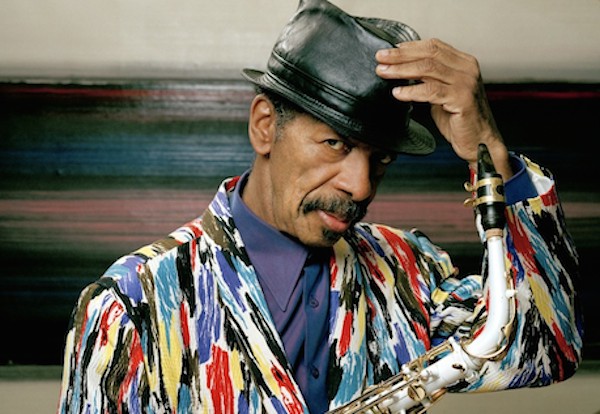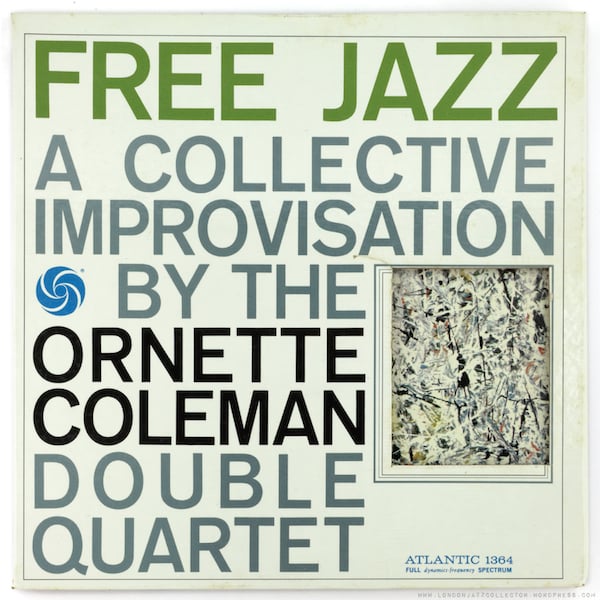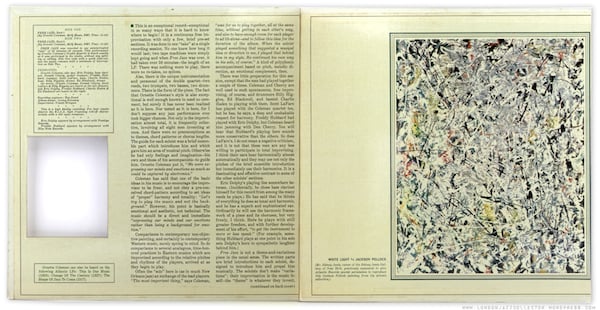People
Jazz Innovator and Jackson Pollock Lover Ornette Coleman Dies at 85
He used a Jackson Pollock painting for the cover of his 1960 breakthrough album.

Photo via: irom.wordpress.com
He used a Jackson Pollock painting for the cover of his 1960 breakthrough album.

by
Amah-Rose Abrams


William Claxton Ornette Coleman (1959)
Photo via: The Redlist
Jazz innovator Ornette Coleman died of a heart attack in New York yesterday. He was 85.
Born in Fort Worth, Texas, in 1930, Coleman started out playing rhythm and blues. His progressive approach made him few friends but it lead him to forever change his musical genre. Ferociously cutting-edge, he used fellow innovator Jackson Pollock’s White Light (1954) for the cover of his seminal Free Jazz (1960) album.
The post-war avant-garde scene was alive and kicking in through the 1940s-60s in Manhattan and Coleman was a key figure in a community that included not only musicians, but also poets, and artists.

Jackson Pollock White Light (1954) used on the cover of Coleman’s Free Jazz (1960)
Photo via: Artpedia
A self- taught musician, legend has it he bought his first saxophone with money he had earned shining shoes.
“I didn’t know you had to learn to play,” he told the Guardian. “I didn’t know music was a style and that it had rules and stuff, I thought it was just sound. I thought you had to play to play, and I still think that.”
After some years of struggle, he gained overnight success in 1959 and completed a legendary ten-week residency at the Five Spot jazz club in New York, where he met people like writer and curator Frank O’Hara and beat poet LeRoi Jones.

Ornette Coleman’s Free Jazz
Photo via: London Jazz Collector
The alto-saxophonist was always looking to push creative boundaries, and in doing so took the jazz movement into new territory. His first album, The Shape of Jazz to Come (1959), broke from the bebop jazz style of the day and reportedly split audiences, with fans walking out or arguing during his concerts at the Five Spot.
In 1960, Coleman released Free Jazz A Collective Improvisation by the Ornette Coleman Double Quartet, an album that would not only create a new type of jazz music, but also featured Jackson Pollock’s White Light (1954) on the cover.
Over the years, critics have drawn parallels between the musician and artist for their seemingly free and unrestricted approaches to their art (see Jackson Pollock Masterpiece Reveals Drip Paintings’ Secret).

The inlay of Free Jazz featuring Pollock’s White Light
Photo via: London Jazz Collector
A great admirer of Pollock, in 2006 Coleman gave an interview to the Observer at New York’s Guggenheim museum, while walking around Pollock’s exhibition “No Limits, Just Edges: Jackson Pollock” (see Strictly Critical Video: One Hour Looking at a Jackson Pollock Painting at MoMA).
“These don’t look like strokes,” he said, speaking of Pollock’s Number 13 (1939). “They look like signals or messages, like a letter he’s writing in the form of art, like some advanced Braille […] It’s not something that you’ve seen before that you can name. It’s something that he created as he did it. The act of creation is the creation.”

Ornette Coleman at 80
Photo via: irom.wordpress.com
This description of Pollock’s work speaks to the revered musician’s approach to music. A true innovator, Coleman was breaking boundaries right into his old age, winning a Pulitzer Prize for his album Sound Grammar in 2007.